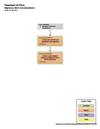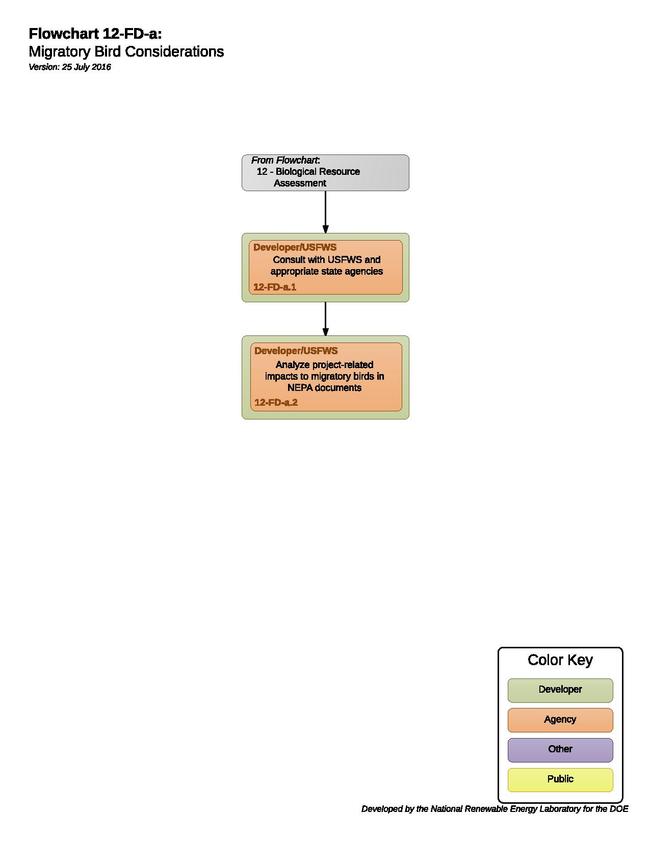RAPID/Roadmap/12-FD-a
Migratory Bird Treaty Act (12-FD-a)
The MBTA protects over 1,000 species of migratory birds, their nests and eggs, by prohibiting possession, sale, purchase, barter, transport, import, export, and take of protected bird species unless permitted by the USFWS or authorized through regulation. 16 U.S.C. § 703. Migratory bird means any bird, which belongs to a species listed by the USFWS in 50 C.F.R. § 10.13. If protected birds are harmed, or their habitat is affected, it may constitute a 'take' under the MBTA.
The USFWS is responsible for administering the MBTA through revising the list of birds protected under the MBTA, authoring regulations, and issuing permits, which enable activities that are otherwise prohibited under the MBTA. 16 U.S.C. § 704.
For more information regarding applicability of the MBTA, consult the USFWS’s Migratory Bird Program Website.
Migratory Bird Treaty Act Process
12-FD-a.1 – Consult with FWS and Appropriate State Agencies
Developers are encouraged to consult with the FWS and state wildlife agencies with jurisdiction to determine if a project has the potential to undergo a 'taking' of migratory birds in violation of the MBTA.
A developer must apply for a depredation permit from the USFWS if a project requires the intentional take of a migratory bird species to protect human health, safety or property. 50 C.F.R. §21.10, 21.100. A developer may only apply for a depredation permit if non-lethal deterrents such as hazing and habitat modification are unsuccessful in mitigating migratory bird depredation. 50 C.F.R. § 21.100.
The USFWS provides an online Information, Planning, and Conservation Tool (IPaC Tool), which aids developers in integrating environmental review into project design. The IPaC Tool contains an interactive map showing migratory bird migration patterns and habitat, a list of birds of conservation concern within specific land areas the project may affect, and provides a step-by-step consultation process.
Depending on the project area, there may be wildlife action plans in place to develop management strategies and/or certain actions may be necessary to mitigate any potential impacts to migratory birds or their habitat. For additional information, consult North American Bird Conservation Iniative.
12-FD-a.2 Analyze Project-Related Impacts to Migratory Birds in NEPA Documents
Federal agencies must analyze project related impacts on migratory birds and migratory bird habitat in any environmental review required by the National Environmental Policy Act (NEPA) or other established environmental review processes pursuant to Executive Order 13186: Responsibilities of Federal Agencies to Protect Birds, Section 3 (EO 13186).
In addition, EO 13186 requires federal agencies to develop a Memorandum of Understanding (MOU) with the USFWS to promote the conservation of migratory bird populations. Pursuant to EO 13186, federal agencies are required to include the following in MOUs with the USFWS:
- Integration of bird conservation principles into agency actions and planning;
- Consideration of the effects of agency actions on migratory birds and migratory bird habitat in environmental review processes;
- Principles, standards, and practices that will lessen the amount of unintentional take of migratory birds; and
- Produce inventories and monitor bird habitat and populations within the agency’s capabilities. Executive Order 13186: Responsibilities of Federal Agencies to Protect Birds, Section 3.
For reference, the following MOUS are provided:
Contact Information
Suggest a contact using the Feedback button above.Suggest edits using the Feedback button above.
Regulations
References

